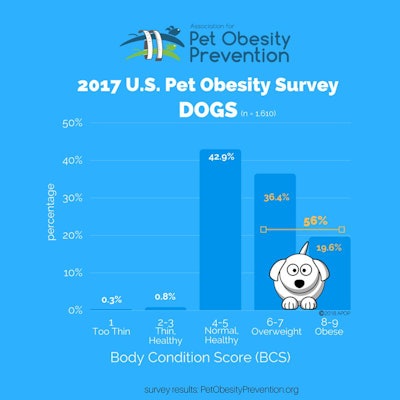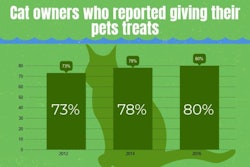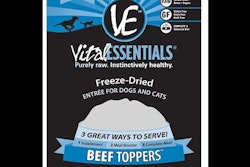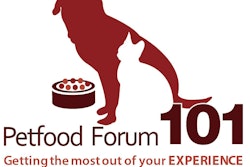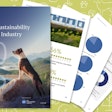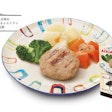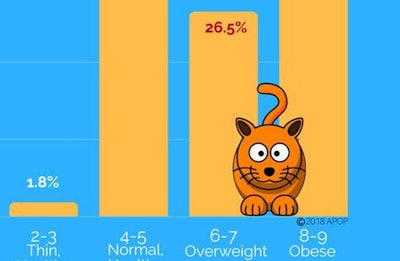
The Association for Pet Obesity Prevention (APOP)’s annual survey provided evidence that pet obesity in the US increased in 2017, affecting 60 percent of cats and 56 percent of dogs. See infographics below.
APOP’s tenth annual survey examined pet owners’ and veterinary professionals’ views on pet food issues such as whether or not pet food has improved, and the best sources of pet dietary recommendations.
When asked if they believed “commercial pet food is better or worse than ten years ago,” a decade after the 2007 melamine pet food recalls, 63 percent of pet owners and 76 percent of veterinary professionals reported pet food in 2017 was “better.”
Pet obesity in the US
“The number of pets with clinical obesity continues to increase,” said APOP founder Ernie Ward, DVM, in a press release. “We’re continuing to see more pets diagnosed with obesity rather than overweight. Clinical obesity results in more secondary conditions such as arthritis, high blood pressure, kidney disease, and certain forms of cancer. Pets with obesity also have reduced quality of life and shorter life expectancy.”
In the October 2017 clinical survey, 56 percent of dogs and 60 percent of cats were classified as overweight (body condition score (BCS) 6-7) or obese (BCS 8-9) by their veterinary healthcare professional. These results indicate an estimated 50.2 million dogs and 56.5 million cats are above healthy weight, based on 2017 pet population projections provided by the American Pet Products Association (APPA). In 2016, APOP found 54 percent of dogs and 59 percent of cats were overweight or obese in the U.S.
Pet owners’ and veterinarians’ views on pet obesity
Pet owners and veterinary professionals were questioned about pet obesity, diet and nutrition, and sources of pet food advice. Fifty-eight percent of pet owners and 54 percent of veterinary professionals reported they had tried to help their own pet lose weight. Low-calorie and weight loss diets combined with increased exercise were the most cited weight loss strategies.
However, forty-eight percent of pet owners stated that their veterinarian failed to recommend a maintenance or routine diet for their pet and 15 percent commented that they “had to ask” to receive a pet food recommendation. Fifty percent of surveyed veterinary professionals replied they offered maintenance pet food recommendations.
Pet obesity survey methodology
The 2017 survey included the assessment of 1,610 dogs and 714 cats by 178 veterinary practives. The online questionnaire was completed by 1,215 pet owners and 544 veterinary professionals from October 11 to December 31, 2017.
Veterinary practices assessed the body condition scores of every dog and cat patient they saw for a regular wellness exam on a given day during the study period. Body condition scores based on a whole-integer, nine-point scale and actual weight were used in classifying pets as either underweight, thin, ideal, overweight or obese.
